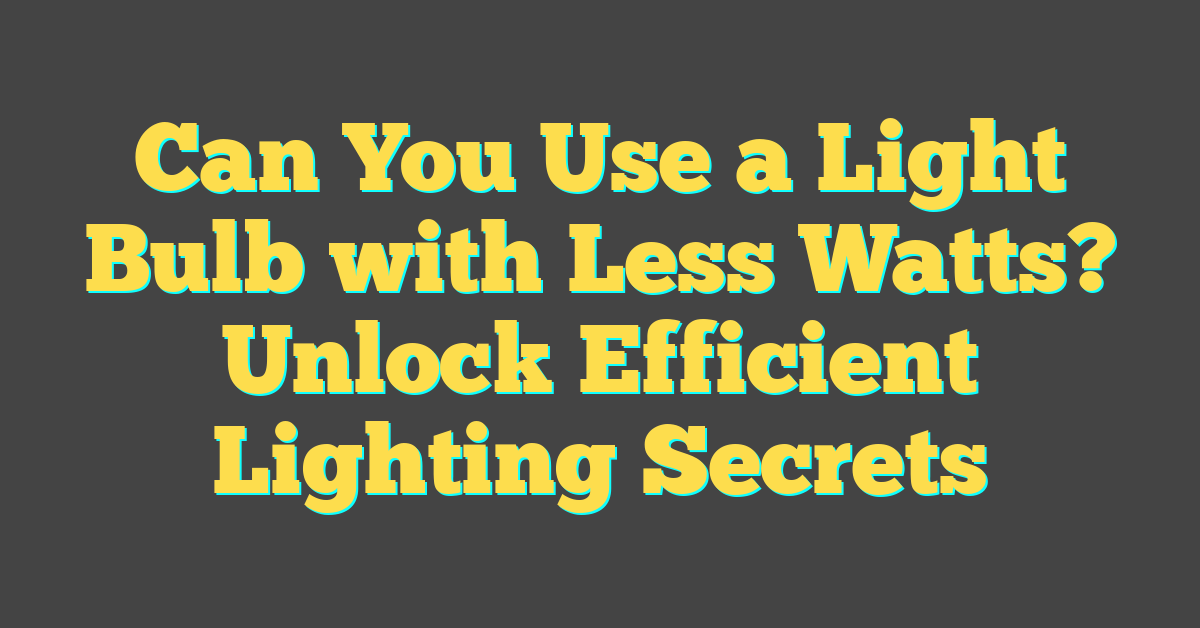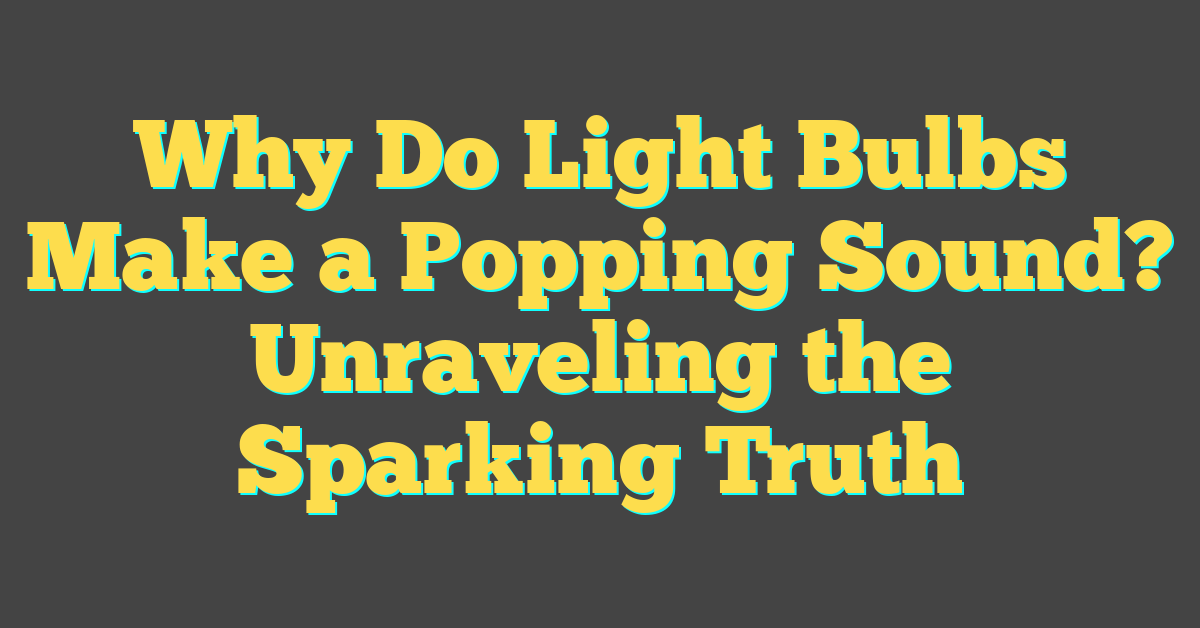Imagine coming home after a long day, flipping a switch, and instantly bathing your room in light. That’s the convenience light bulbs offer over candles. They’re a staple in modern living for good reason, and it’s not just about ease of use.

Light bulbs have revolutionized the way you see the world, literally. They’re safer, more efficient, and can last years longer than their waxy counterparts. While candles have their charm, the benefits of light bulbs shine bright in comparison.
You’re about to dive into the reasons why light bulbs have outshone candles, transforming how you illuminate your life. Get ready to see why this invention is one of the brightest ideas in history.
Safer Lighting Option
When you’re passionate about home DIY projects, you understand the importance of safety in every detail, right down to the way you light your space. With light bulbs, you’re opting for a safer lighting solution that drastically reduces fire risks. Unlike candles, which come with an open flame, light bulbs stay cool to the touch and don’t rely on fire to provide illumination.
In fact, the National Fire Protection Association reports that from 2012-2016, candles caused 2% of reported home fires, leading to an annual average of 81 deaths, 677 injuries, and $278 million in property damage. On the other hand, the use of electric light bulbs does not directly ignite flames or emit heat that could cause combustible materials to catch fire.
Think about it: you’ve got curtains, paper, and other flammable decor in your home. With candles, even a slight draft can turn a cozy ambience into a hazardous situation. But with light bulbs, especially LED ones, the risk of accidents is minimized due to their low heat output. Plus, they’re encased which prevents any direct contact with the elements that could lead to a fire.
| Type of Lighting | Estimated Home Fires | Injuries | Deaths | Property Damage |
|---|---|---|---|---|
| Candles | 2% | 677 | 81 | $278 million |
| Light Bulbs | Significantly lower | Fewer | Fewer | Significantly lower |
For DIY enthusiasts like you, who often work around the house and deal with various materials, the significance of using light bulbs instead of candles cannot be overstated. Think of all the projects you undertake and the peace of mind you’ll have, knowing your work light won’t turn into a fire risk.
Moreover, you’ve got options. Today’s market offers a variety of light bulbs, from incandescent to compact fluorescent lamps (CFLs), and the increasingly popular LED bulbs. Each has its benefits in terms of efficiency and safety, but LEDs lead the pack with their sturdy design and negligible heat output. Whether you’re installing a new fixture or just replacing a burnt-out bulb, you’re contributing to a safer living environment one light bulb at a time.
Greater Energy Efficiency

When it comes to illuminating your space, energy efficiency isn’t just a fancy term—it’s the cornerstone of a cost-effective and environmentally friendly lighting decision. Light bulbs, particularly LED ones, are champions of energy efficiency. You’ll find that they consume significantly less power compared to candles for the same amount of light. Let’s break down the numbers.
Here’s a comparative look at the energy consumption:
| Light Source | Energy Consumption (Watts) | Luminosity (Lumens) |
|---|---|---|
| Candle | About 1 Watt | 13 Lumens |
| LED Bulb | 8-12 Watts | 800-1000 Lumens |
It’s clear that the lumen-per-watt ratio is exponentially higher with light bulbs. In simpler terms, you’re getting more bang for your buck with light bulbs, brightness-wise.
Energy efficiency isn’t just about lower energy bills—it also means a smaller carbon footprint. Unlike candles that burn through finite resources such as wax and release soot into your home environment, light bulbs use electricity and can be powered through renewable sources like solar or wind. LED bulbs, in particular, run cooler, reducing the energy lost through heat and thus are more efficient than even their incandescent or fluorescent counterparts.
What’s more, the longevity of light bulbs is another factor to consider. A single LED bulb can last up to 25 times longer than a traditional wax candle. Think about it: fewer replacements mean less waste and even more savings over time. As someone who loves to get the most out of every DIY project, the value over time by choosing light bulbs is undeniable.
So, while the initial cost of LED bulbs might be higher compared to a box of candles, the long-term savings are substantial. It’s not just your wallet that’ll thank you, but the planet too, as fewer resources are consumed over the lifespan of a bulb versus the repeated purchase and burning of candles.
Longer Lifespan
« Why is My Light Bulb So Hot? Cool Down with These Lighting Tips
Can You Take Light Bulbs When You Move? What You Need to Know Now »

When you’re deeply immersed in a DIY home project, the last thing you want is uncertainty, particularly regarding the longevity of the components you’re including in your space. That’s why LED light bulbs stand out, offering a lifespan that far exceeds the fleeting glow of traditional candles. On average, an LED bulb has a remarkable capacity to last up to 25,000 to 50,000 hours.
Durability That Shines Through
Think about it — if you’re using a candle, you’re lucky to get a few hours before you’re back to square one, replacing it. In contrast, let’s say you have an LED bulb burning for 8 hours a day; you’re looking at up to 17 years of reliable illumination before it’s time for a change. That’s nearly two decades of not having to climb ladders or remembering to buy replacements.
| Lighting Option | Average Lifespan (Hours) | Daily Use (Hours) | Years until Replacement |
|---|---|---|---|
| LED Bulb | 25,000-50,000 | 8 | 8.5-17 |
| Candle | 4-12 | 4 | < 0.001 |
Better Material, Less Hassle
LED bulbs are crafted from durable materials that resist breaking, which means less worry about replacements and more time spent enjoying your well-lit home. The resilience of these bulbs to frequent switching on and off, as well as their ability to perform well under a range of environmental conditions, further underscores their suitability for long-term use. Whether it’s the living room, your home office, or outdoor spaces, LED light bulbs provide a steadfast lighting solution without the recurring inconvenience of short-lived alternatives.
Remember, each day you spend not having to replace a light source is a day gained for other creative home endeavors. So as you continue improving your sanctuary, consider the lasting impact of choosing light sources that are not just about function and style, but also about enduring through every chapter of your home’s story.
Versatility in Lighting Options

Offering a diverse range of functionality, light bulbs stand out for their sheer versatility. As you delve into the world of DIY projects and home lighting, you’ll appreciate the myriad of ways in which light bulbs can be adapted to suit any mood or environment. Whether it’s the warmth of a dimmed bulb for a cozy evening at home or the bright, focused light needed for reading or intricate tasks, light bulbs provide options that candles simply cannot match.
LED bulbs, in particular, offer a spectrum of color temperatures, from the warm yellow tones akin to candlelight all the way up to the crisp white light resembling daylight. This feature is particularly useful when considering the ambiance you’re aiming to create. For your do-it-yourself home projects, LED lights cater to the meticulous attention to detail required while also offering a variety of shapes and sizes that integrate seamlessly into your creations.
Accessibility is another aspect of light bulbs’ versatility. Dimmer switches can instantly alter the room’s atmosphere, a flexibility you won’t get from candles. With smart home systems, you can even control lighting with your smartphone or voice commands. Imagine adjusting your home’s lighting without leaving the comfort of your couch—or even tweaking lights while you’re away. This interaction between technology and illumination is elevating the way you light your home.
- Color temperature control
- Dimming capabilities
- Smart home integration
It’s also worth noting the adaptability of bulbs to different fixtures and installations. Light bulbs are designed to fit into an array of sockets, from the standard lamp you have at your bedside to high-grade fixtures that illuminate art in galleries. On the other hand, candles are limited by their need for fire-resistant holders and don’t offer the same level of precision in illuminating a space.
Light bulbs aren’t just for indoors, either. Your outdoor spaces can shine just as brightly with the appropriate light bulbs. Durable and weather-resistant options are perfect for garden lighting, patio ambiances, and even security lighting, features that are impractical to achieve with candles. Each bulb type is meticulously crafted to withstand the elements, ensuring that come rain or shine, your lighting remains consistent and reliable.
Conclusion
So you’ve seen how light bulbs outshine candles with their versatility and adaptability. They’re not just a source of light; they’re a way to shape your environment exactly how you want it. Whether you’re setting the mood for a cozy evening or lighting up a workspace, light bulbs are the go-to choice. They’re a testament to how modern technology can enhance our daily lives—simple, efficient, and tailored to your needs. Remember, next time you’re looking to brighten up your space, reach for the light switch, not the matchbox.
Frequently Asked Questions
What are the advantages of light bulbs over candles?
Light bulbs are more versatile, offering a range of color temperatures and dimming options to create different moods. They can be integrated into smart homes, are suitable for both indoor and outdoor use, and provide precise lighting.
How do LED bulbs increase the functionality of light bulbs?
LED bulbs allow for a spectrum of color temperatures and can be dimmed, helping to adjust the ambiance of a room. They are energy-efficient and have a longer lifespan than traditional bulbs.
Can light bulbs be integrated with smart home systems?
Yes, many light bulbs can be integrated with smart home systems, allowing for remote control of lighting, scheduling, and even voice activation through smart assistants.
Are light bulbs suitable for outdoor use?
Absolutely, light bulbs are adaptable to various fixtures and are designed to be suitable for both indoor and outdoor use, making them a flexible lighting solution.
Can light bulbs offer the same ambiance as candles?
While candles have a unique charm, light bulbs can replicate a range of ambiances through adjustable color temperatures and dimming capabilities, making them a more precise and versatile option for mood lighting.




